2002 North Main Street
Santa Ana, California 92706
TEL: 714.567.3600
Gong With the Woodwind: Instruments of China and Southeast Asia
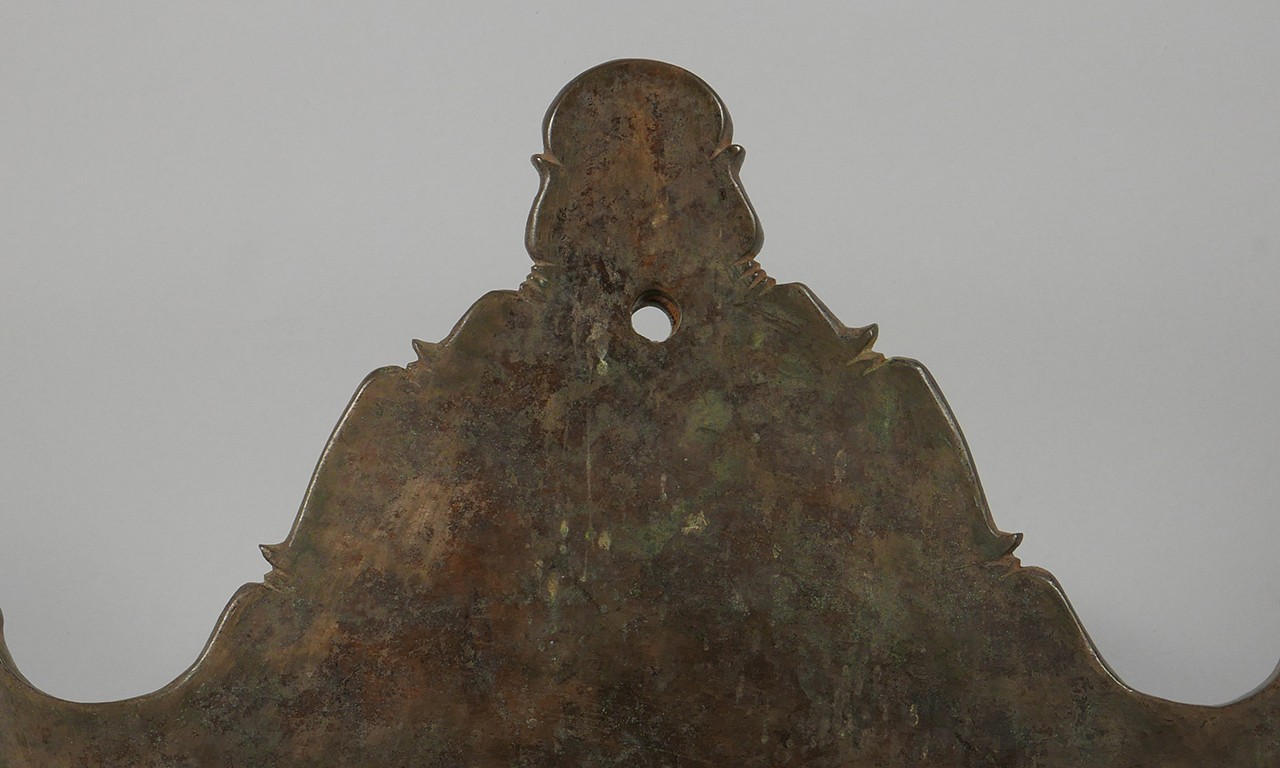 |
| Detail of Gong (Kyizi), 19th to 20th Century Myanmar Brass; 8 1/8 × 12 1/2 × 3/4 in. 2020.14.19 Gift of Anne and Long Shung Shih |
Melodies of Late Summer
Like the visual arts, there is a universality to music that is only affected by a handful of factors. Just as a culture’s paintings are influenced by the brushes they use; their music is a product of their instruments. Musical instruments from around the world can be classified into five different groupings based on what produces their sound: for idiophones like cymbals this is the vibration of their body, membranophones like drums have vibrating membranes, chordophones like guitars have vibrating strings; aerophones like flutes vibrate air rather than any part of the instrument, and electrophones are instruments which have electric action, amplification or in the case of the theremin rely on a mild form of witchcraft. Within these five groupings though is a brilliantly wide scope of different sounds. This post looks at a group of recently acquired musical instruments from China and Southeast Asia and looks at what makes them unique.
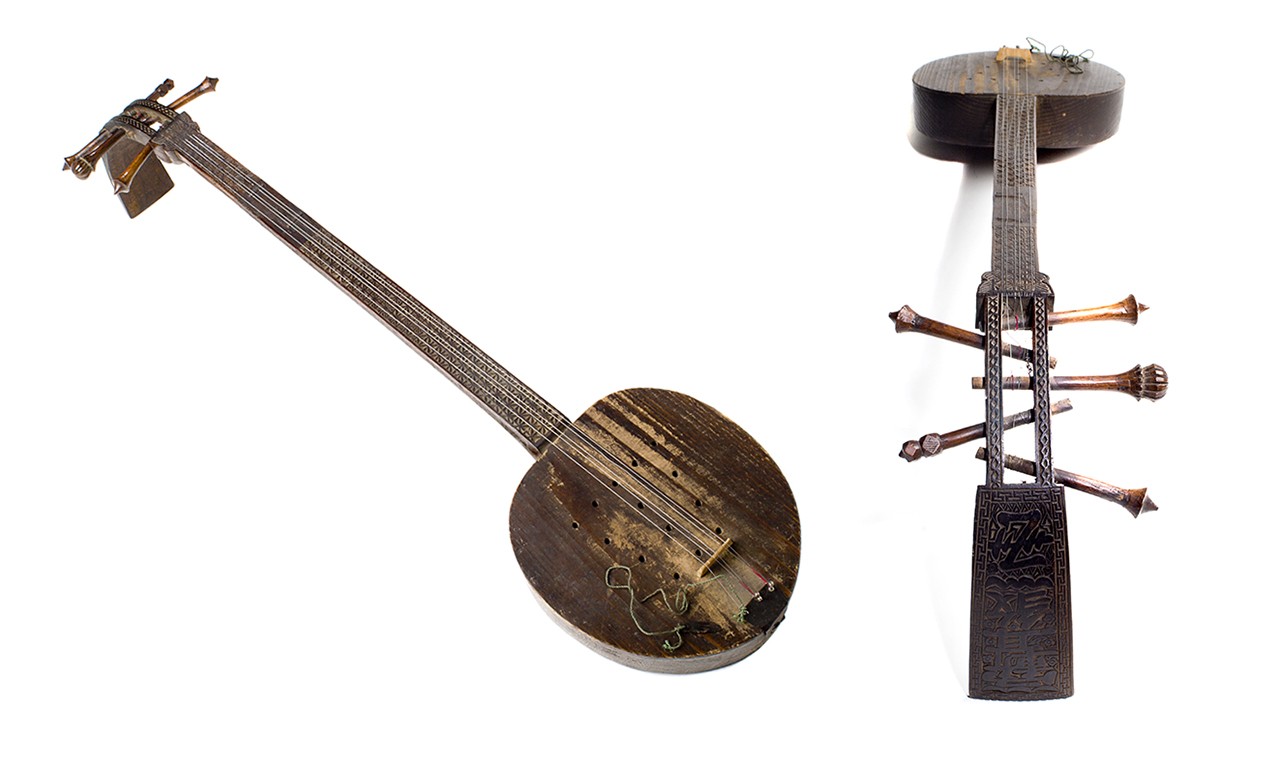 |
| Stringed Instrument, 20th Century Miao culture; Guizhou Province, China Wood; 36 × 9 × 9 1/2 in. 2019.22.85 Anonymous Gift |
Imposing Sanxians
There is a long history of string instruments in China, with perhaps the most famous being a variant of the zither called the guqin. Plucked lutes such as the above also have a long history and have been used by several of the country’s cultures. This example appears to have come from the Miao culture of the Guizhou Province. However, this chordophone does not fall neatly into any of the classifications of Chinese string instruments. It resembles a hybrid of two instruments: the ruan which is a four-string, fretted instrument known, like the banjo, for the characteristically circular shape of its body; and the sanxian which shares with this object the long neck, relative lack of frets, and body shape. The sanxian differs by having a snakeskin covering (or resonator) and only three strings. The unique elements of this object as well as its untranslated Chinese characters still pose mysteries.
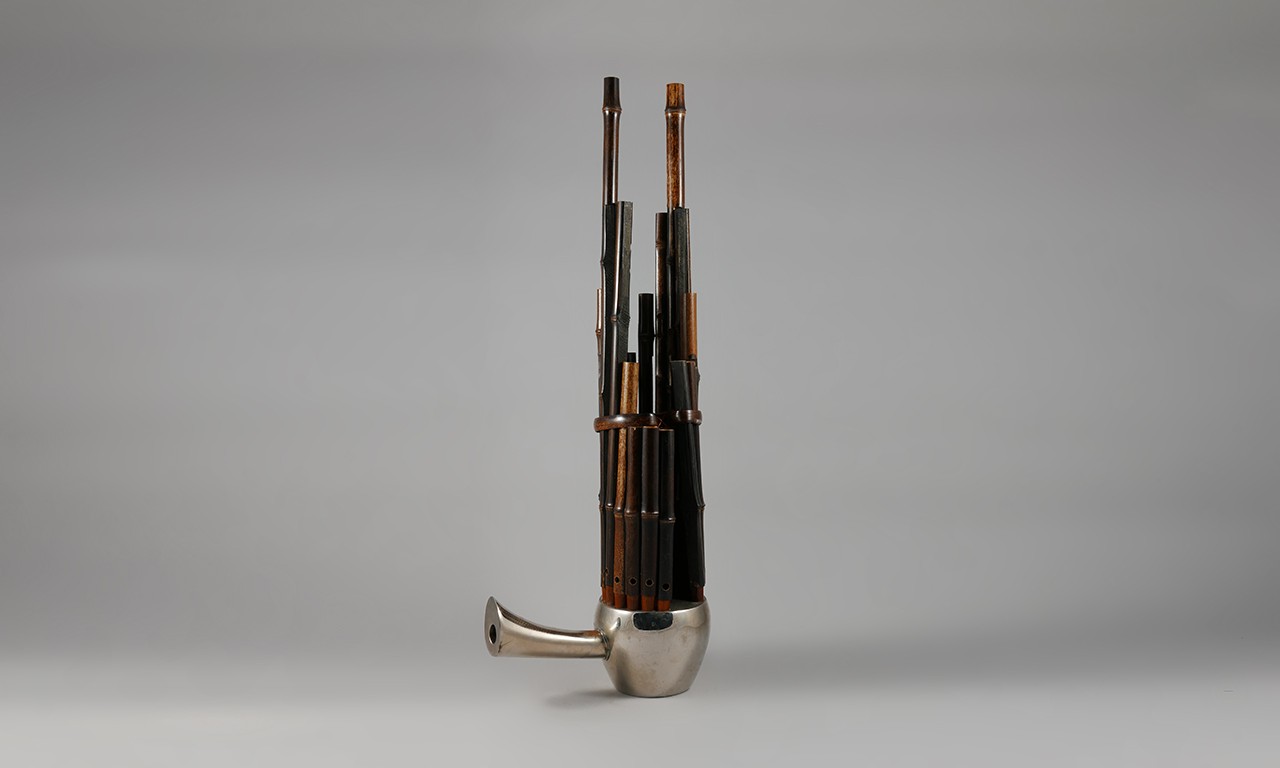 |
|
| Sheng, 20th Century Miao culture; China Metal and bamboo; 20 3/4 × 4 × 7 3/4 in. 2020.14.21a-s Gift of Anne and Long Shung Shih |
Wu Wei of the London Philharmonia Orchestra demonstrating how a sheng is played |
Blown Away
This curious bagpipe-like instrument plays a big role in traditional Chinese music. Even if visitors to the Bowers Museum do not recognize it by sight, they might recognize its sound from our Ancient Arts of China: A 5000 Year Legacy exhibition. This is a sheng, a Chinese aerophone which dates to at least 1100 BCE. The instrument has a varying number of pipes—the 17 seen here are traditional but contemporary shengs have up to 53—and though it was traditionally made exclusively from bamboo, it has since come to be made of several different mediums. It is played by blowing into the metal mouthpiece while covering the holes in pipes of different lengths to produce different notes. This can be done with one’s fingers but is made easier with a metal superstructure which is not seen here. Like the string instrument above this was made and used by the Miao people of China. It is as characteristic of the Miao people as the Han culture, and an instrument of choice in playing many of their traditional folk songs.
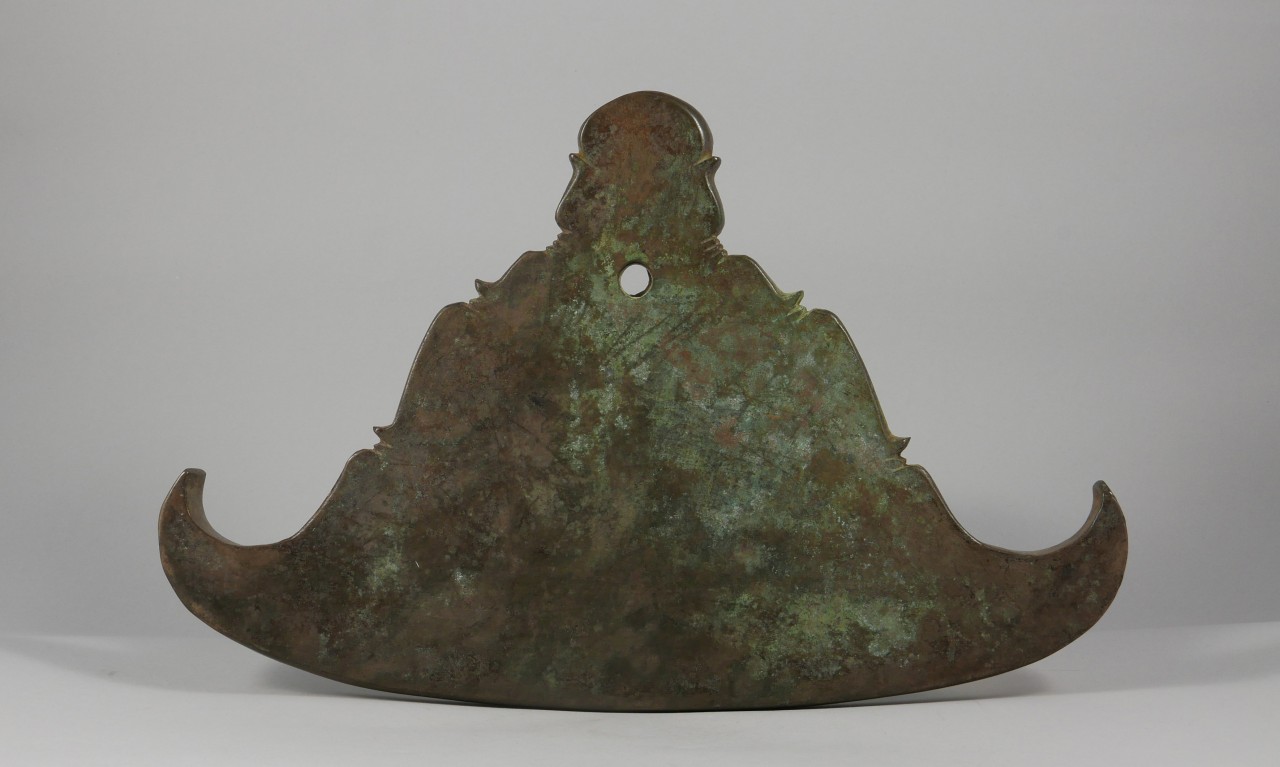 |
| 2020.14.19 Gift of Anne and Long Shung Shih |
The Brass Section
Though the shape of this object might not immediately indicate that it is an instrument at all, this flat brass instrument from modern-day Myanmar still produces a clear note when struck. Kyizi, as they are referred to in Burmese vernacular, are well-disguised gongs, a variety of idiophone. They vary substantially in size which affects the sound they make. This example was made some time in the 19th or 20th century. It would have been hung in a temple and sounded at regular intervals to announce calls to prayer and other important daily happenings. They are often decorated with inscriptions which are not seen here, but the abstracted form of a Buddha sitting on a lotus flower shape is also part of their aesthetic. In Myanmar, kyizi were originally cast in wooden molds with this being a common form.
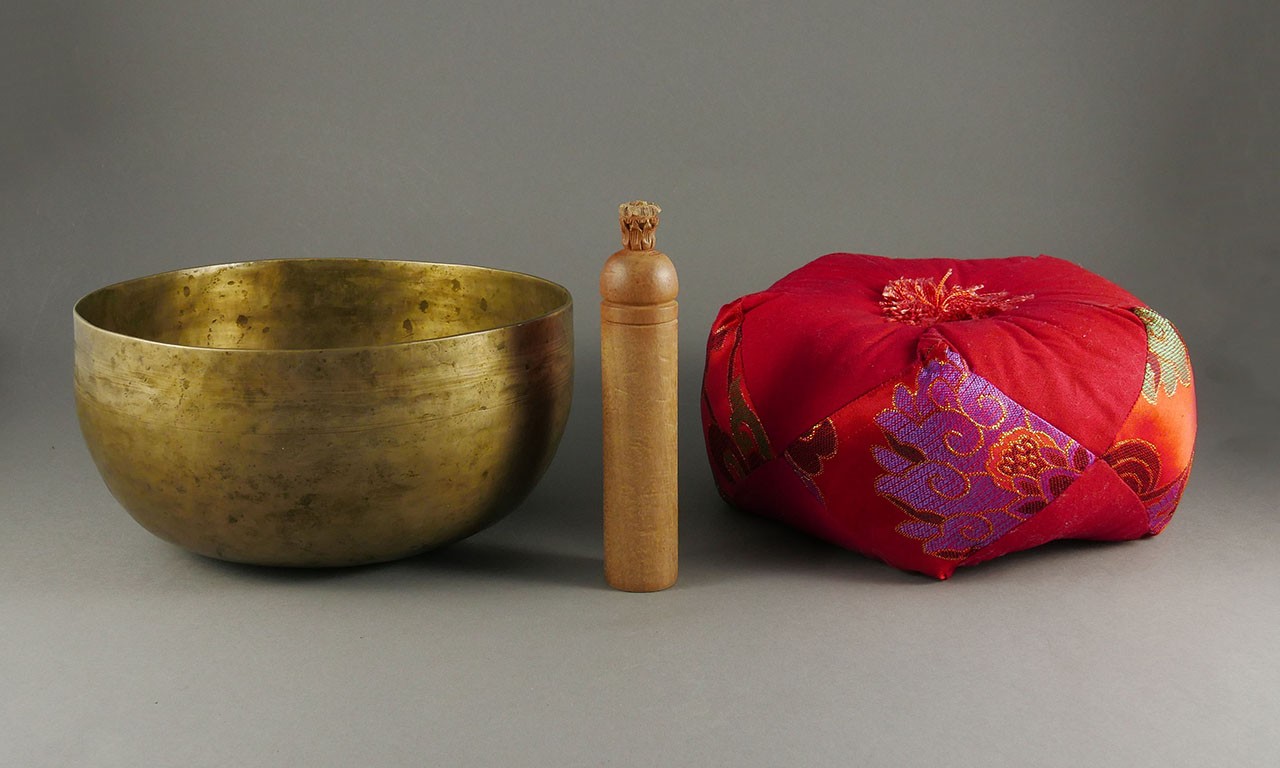 |
| Singing Bowl with Striker and Cushion, 20th Century Tibetan culture; Tibet Autonomous Region, China Fabric, thread, silk, brass and wood; 4 × 7 3/4 × 7 3/4 in. 2019.15.30a-c Gift of Anne and Long Shung Shih |
Soothing Tones
The final instrument in this post is also an idiophone though it is played in a very different way than a gong. Its striker is rotated around the edge of the bowl much in the same way that crystal glasses can be played by running a moistened finger around their rims. Singing bowls are said to have originated during the life of Buddha Shakyamuni (560 – 480 BCE). There is some debate as to when they arrived in Tibet, but they purportedly came from India with the traditional teachings of Buddhism by the great tantric master Padmasambhava in the 8th century. Singing bowls are used to invoke a relaxed state through sound, which makes them essential to the meditative process. Along with meditation, singing bowls are used in holistic healing and chakra balance.
Text and images may be under copyright. Please contact Collection Department for permission to use. References are available on request. Information subject to change upon further research.

Comments 2
It don’t mean a thing if ain’t got that sheng!
Fascinating instruments!~